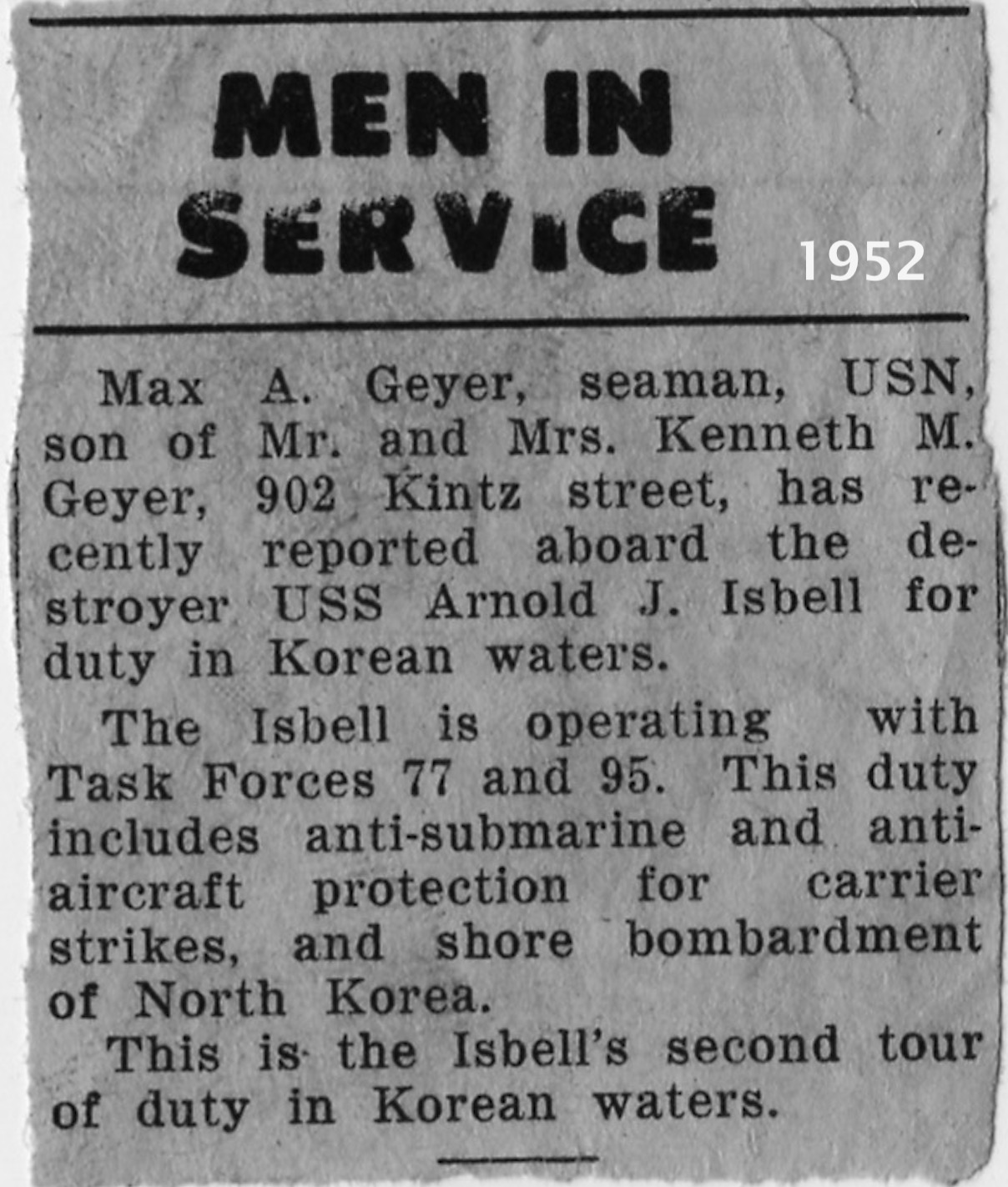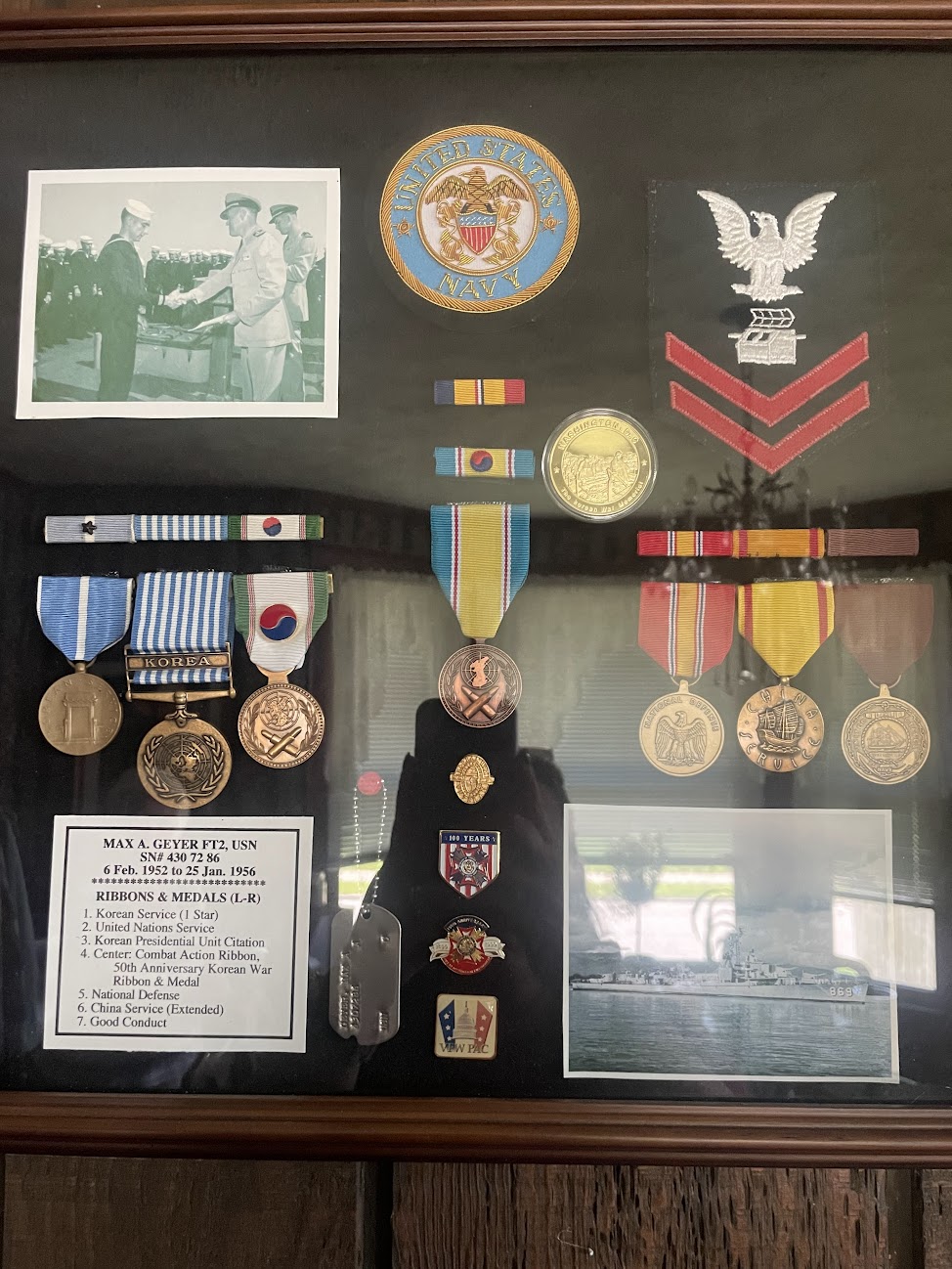
Max Geyer
Max Geyer joined the Navy on February 6th, 1952 in Indianapolis, Indiana. His related civilian occupation is listed as an electrical repairman. He was stationed out of San Diego. His most significant duty assignment is listed as USS Arnold J. Isbell (DD-869). Between 19 February and 10 August 1952, the Isbell acted as a unit of Task Force 77, the 7th Fleet Striking Force. For a short time, the Isbell was a member of the Formosa (Taiwan) Strait patrol and joined the carrier St. Paul (CA-73) in bombarding Songjin, North Korea. The Isbell returned to the US in August and began a 3-month overhaul in Puget Sound Naval Shipyard. Mr. Geyer recalls his participation in the Korean War with this memory … “When the Isbell was bombarding the coast of North Korea, I and another sailor were down below deck in an ammo magazine, loading a hoist with powder canisters and 52-pound projectiles to send up to one of our three 5-inch gun mounts, which was laying down barrages on the North Korea shoreline. We were acutely aware that if the ship took a hit near our location, with all the explosives that surrounded us, it would have been pretty disastrous.”
Recognized in local paper

Clipping from the Huntington Herald Press in 1952.
Korean War - Key Events
April 25, 1951
Vastly outnumbered UN forces check the Chinese advance on Seoul at the Battles of Kapyong and the Imjin River. Two Commonwealth battalions—the 2nd Battalion of the Princess Patricia’s Canadian Light Infantry Regiment and the 3rd Battalion of the Royal Australian Regiment—rebuff an entire Chinese division at Kapyong, and 4,000 men of the British 29th Brigade stage a successful delaying action against nearly 30,000 troops of the Chinese 63rd Army at the Imjin River. Some 650 men of the 1st Battalion, the Gloucestershire Regiment (the “Glorious Glosters”), engage in a Thermopylae-like stand against more than 10,000 Chinese infantry at Imjin. Although the overwhelming majority of the Glosters are killed or captured, their sacrifice allows UN forces to consolidate their lines around the South Korean capital.
These events are taken from the Encyclopedia Britannica



Comments
Likes 0
You must be a registered user to comment or like - please register to join us!